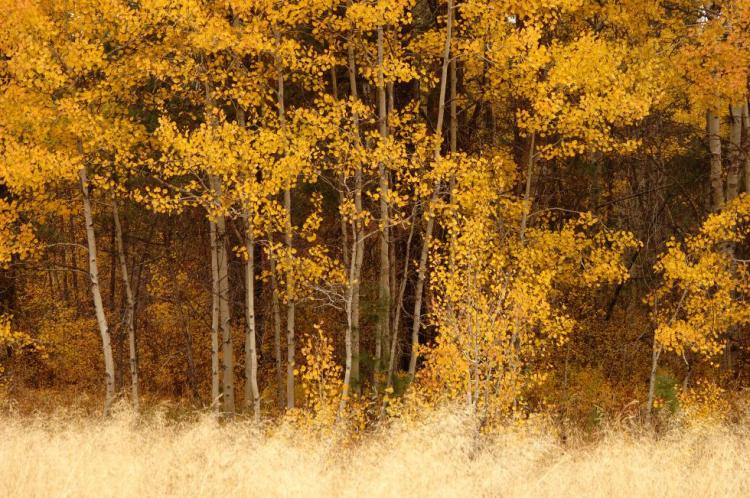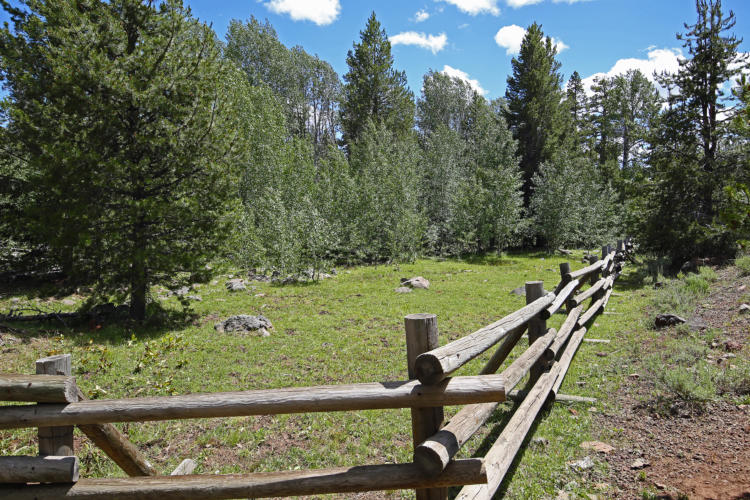
Aspen woodlands are woodland or forest communities, dominated by aspen trees with a forb, grass, or shrub understory. Aspen woodlands can also occur within conifer forests.
Limiting Factors and Recommended Approaches
Limiting Factor: Altered Fire Regimes and Encroachment From Juniper and Conifers
Fire suppression has resulted in juniper encroachment and lack of reproduction in aspen.
Recommended Approach
Carefully reintroduce natural fire regimes using site-appropriate prescriptions, accounting for the area size and vegetation characteristics that affect resiliency and resistance to disturbance. Use mechanical treatment methods (e.g., chipping, cutting for firewood) to control encroaching junipers, recognizing that reintroducing a disturbance regime may be necessary to reinvigorate aspen reproduction. Apply treatments appropriately with respect to season and location.
Limiting Factor: Lack of Reproduction
In addition to fire suppression, overgrazing has limited aspen recruitment. When conditions are over-grazed, aspen will sprout but not grow fully into trees. Cattle and ungulates impact the soil, herbaceous layer, and sprouts.
Recommended Approach
Limit over-grazing. Use temporary ungulate exclosures to encourage reproduction at high priority sites.
Limiting Factor: Degraded Understories
Invasive plants, introduction of non-native pasture grasses, and historical overgrazing have altered the understory of many aspen stands.
Recommended Approach
Control invasive plants using site-appropriate methods and reintroduce native bunchgrasses and flowering plants at priority restoration sites.
Limiting Factor: Fragmentation
While some aspen patches naturally occurred in isolated patches, habitat conversion has increased fragmentation and isolation of aspen.
Recommended Approach
Analyze historical and current aspen distribution at the watershed scale to plan restoration activities that increase connectivity of aspen patches.
Limiting Factor: Mapping Limitations
Current mapping efforts do not adequately document aspen stands due to their small patch size. Lack of adequate maps affects ability to understand size, extent, and spatial placement of aspen, and to restore connectivity of aspen patches at a landscape scale.
Recommended Approach
Support efforts to map aspen and other important habitats at fine (less than 100 feet pixel) scales.
